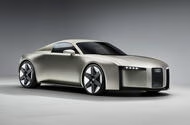Audi Concept C Unveiled Boldly Redefines Roadster Design for a New Era
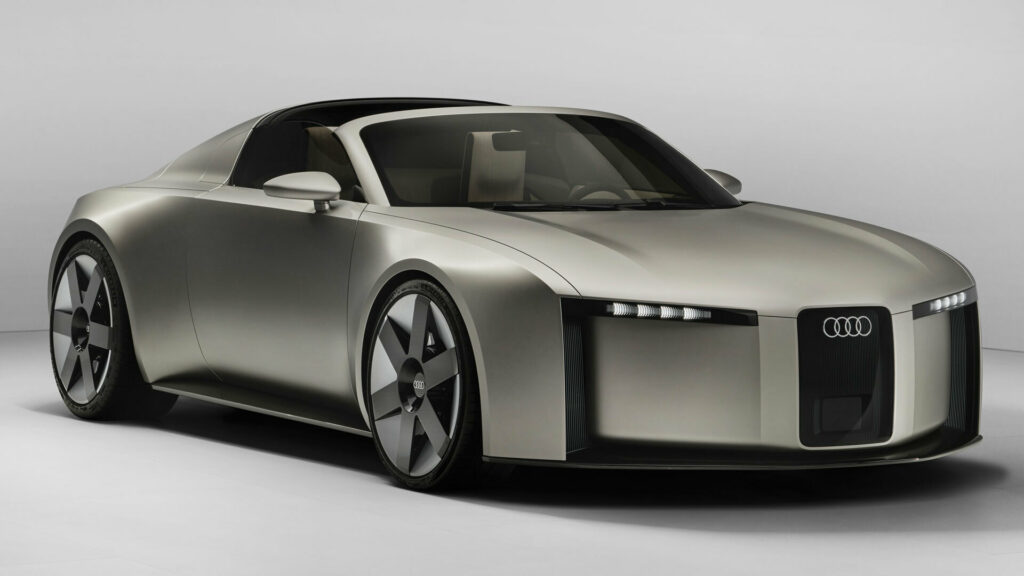
Audi Unveils Bold Electric Sports Car Concept with Striking Targa Roof
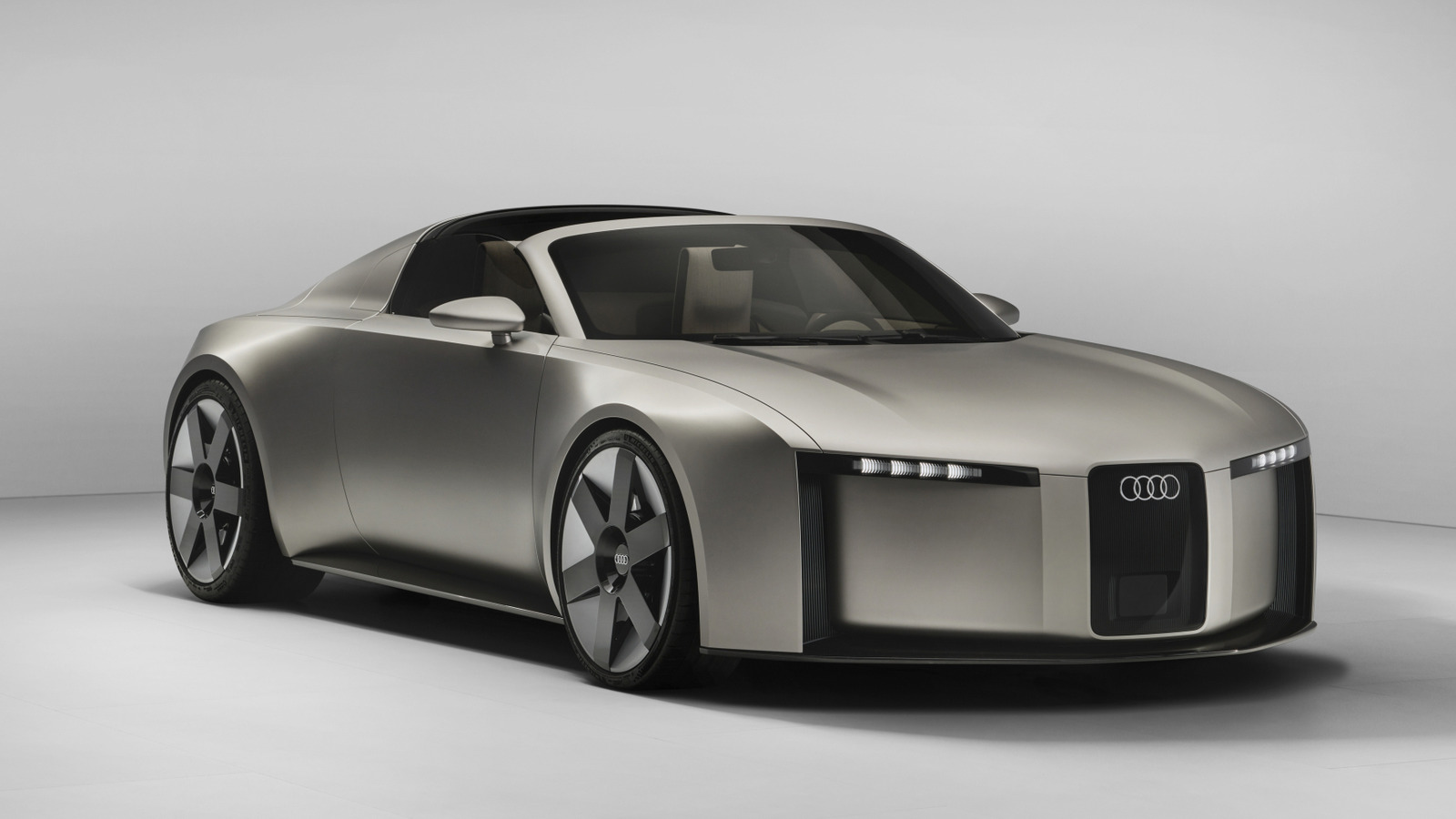
Audi Unveils Bold Electric Roadster Redefining Sports Car Simplicity for 2027
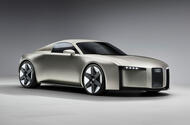 Audi reinvents its look with a retro EV drop-top, which is confirmed for production as Porsche Boxster twin
Audi reinvents its look with a retro EV drop-top, which is confirmed for production as Porsche Boxster twin
Audi has revealed a striking two-seat sports car inspired by the TT, which previews a radical new design language for all of its upcoming cars - and will go on sale largely unaltered in 2027.
The Concept C was revealed at a dedicated event in Milan – a week before making its public debut at Audi’s local motor show in Munich – as the first step in a complete design and strategy rethink for the company, via which it aims to return to growth following a challenging period of declining sales and weakened profit margins.
Its unveiling comes around two years after Audi ended production of the TT, the era-defining, Volkswagen Golf-based sports coupé that enjoyed strong commercial success over three generations.
The retirement of the V10-engined R8 supercar a few months later left the German firm without a dedicated sports car offering for the first time in a quarter of a century.
But this new show car is confirmation that the firm will make a grand return to the segment with a compact, electric two-seater that blends futuristic cues and technology with elements of historic Audi models and a focus on driver engagement.
While the Concept C takes heavy inspiration from Audi's seminal sports coupé, though, CEO Gernot Döllner categorically ruled out applying the TT name to the production version given the inherent differences in positioning.
"The Concept C is not a successor of the TT. It's a different segment to the TT - it's somewhere exactly in the middle between TT and R8," he told Autocar. "We will come up with a name once the car hits the road as a serious product."
Simplicity is key
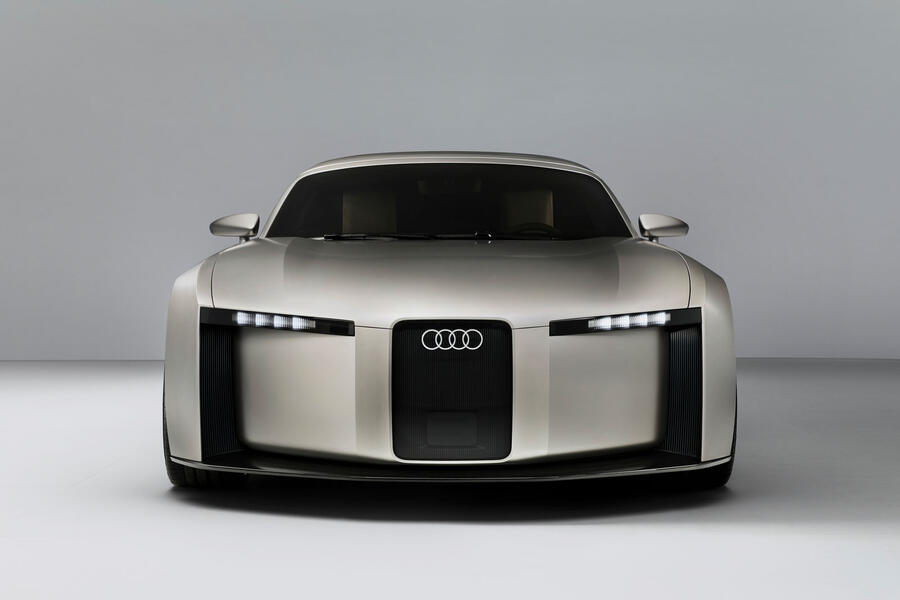
The Concept C – a name that references both Audi's renewed focus on 'clarity' and the 1936 Auto Union Type C grand prix racer from which it takes inspiration – is a statement of intent from new head of design Massimo Frascella, who aims to make the brand "truly distinctive again" with his radical new styling direction.
Frascella joined Audi last year after a 13-year stint at JLR, where he led the design of the current Discovery, Defender and Range Rover. On his arrival in Ingolstadt, he spoke of his appreciation of "simplicity" and said he was “passionate about creating designs that are free from superfluous ornaments and do not merely follow trends”.
The Concept C stays true to that ambition, with a minimalist, monolithic design treatment that majors on simplicity - a theme which will come to define not just the company's cars but also its strategic approach as it embarks on a "fundamental realignment" underpinned by a focus "on what is essential".
Audi is currently fighting back after a "very challenging" 2024 in which it faced severe headwinds in the form of supply chain challenges, global political tensions and increased Chinese competition. Ultimately, the firm posted a 12% drop in deliveries, a significant 7.6% dip in overall revenues and a dramatic drop in profits of more than three percentage points.
With the company warning that 2025 "will not be any easier", Döllner recently spoke of the need to "make Audi future-proof again" by cutting costs across the whole organisation and remodelling its future strategy "with the courage to break new ground and with confidence in our traditional strengths".
Audi said the Concept C embodies this strategic rethink with a "reduced and timeless aesthetic that will continue to differentiate the company in times of increased competition".
"It is a tangible interpretation of the new design philosophy, a symbol of the determination that will transform our company and the entire brand," said Frascella, referring to the new approach as "the radical next".
Already, in its quest for simplicity and clarity, Audi has reversed the oft-critiqued decision to give electric cars even model numbers and ICE cars odd - a strategy that customers and dealers said was inviting confusion and making the model range hierarchy unclear.
Clues to the future
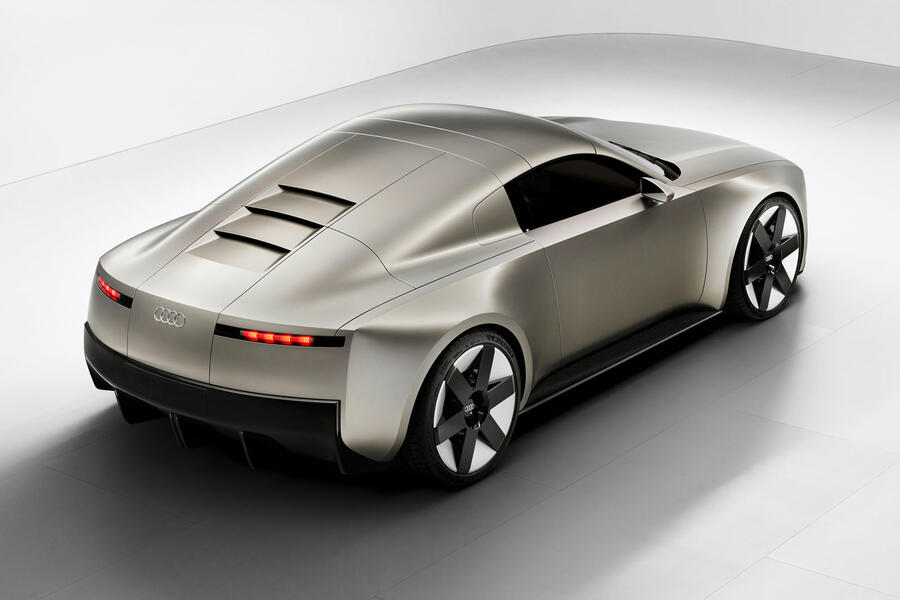
As a design showcase, the Concept C introduces several new features and cues that will be rolled out across the Audi line-up in due course, but it is intended as more than a mere show car - and Frascella told Autocar it will make production in almost this exact form in two years' time.
"The car that you see here is a preview of a production car - almost literally," he said, confirming 2027 as an expected launch date.
The Mk4 TT will be one of the first entrants into a nascent electric sports car segment - with concerns over weight, cost and driver engagement commonly cited as barriers to growth in this sector. Frascella acknowledged the challenges but said: "How great if we are the ones that change that perception." He added that Audi "would not be doing it" if it did not see the segment as viable.
That was backed up by Döllner, who said: "We have been looking at the market. It's not a huge market, but we believe it's a very interesting segment to have a roadster and a coupé in one concept."
He added that the production car will remain electric-only, and there are no plans for a combustion version: "We believe the electric drivetrain is a perfect fit. It's not a car for the race track - it's a car for country roads, for performance driving."
But he did acknowledge the challenges in matching the engagement and tactile appeal of traditional combustion-powered sports cars, and said Audi is likely to add optional synthesised engine notes and gear shifts in a bid to enhance the sports car's dynamic appeal.
"To start, maybe we will add sounds and emotion for those who miss it. But personally, driving a convertible, I don't, I don't miss the engine sound driving around. So it's two customer groups: one for silent cruising and the other ones who want performance and sound, and we will deliver solutions for for both groups.
With regard to potential for a 'fake' gearbox, he said: "We are investigating different strategies there. To be honest, in the first place, we thought we should not do that, but we changed our mind...
"With an electric car on the race track, I'm faster with a virtual gearbox than without, because it's a very important feedback that you get when you are trained on a car with a manual gearbox, and it's also a performance measure."
Frascella stopped short of identifying any specific areas that could change for the production car but said: "It's a close preview - pretty much what you see."
Like the original TT of 1998, the Concept C's glasshouse extends to the rear of the body and appears to sit "on" the body, with the two halves of the car split horizontally by an accentuated shoulder line.
The two-seater features a retractable hardtop – a first for an Audi cabriolet – and 'mid-engined' proportions that are the result of a centrally mounted battery pack - a layout it will share with Porsche's upcoming 718 Boxster and 718 Cayman, which use the same specially adapted version of the Porsche-Audi developed PPE platform.
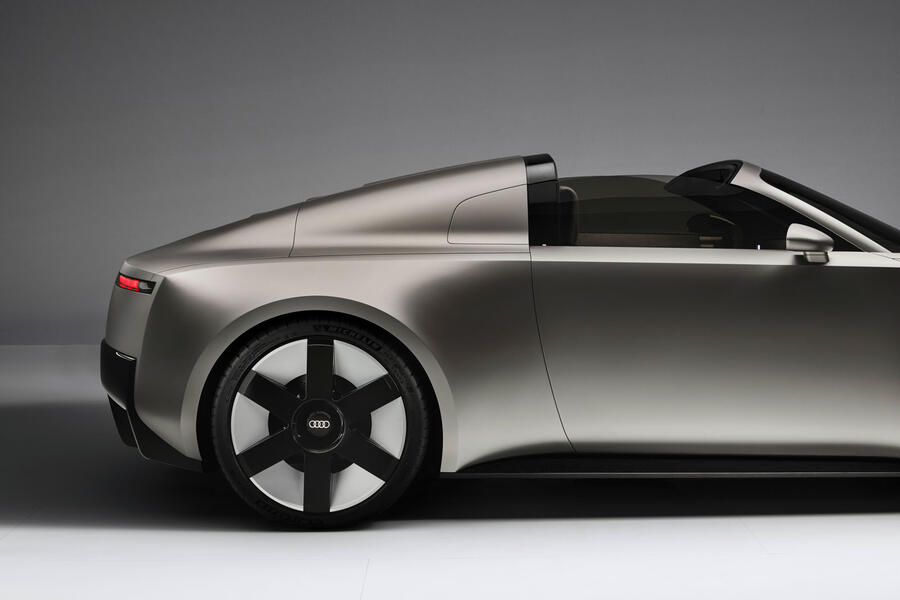
Placing the batteries in the centre of the chassis, rather than under the floor, allows an electric sports car to have its seats closer to the ground, optimises weight distribution and keeps the centre of gravity as low as possible - all attributes that help to make them feel like 'traditional' ICE sports cars.
The Concept C, which is described as driveable, uses a single motor at the rear, but the production version will be available with a range-topping twin-motor arrangement - although no power figures have been given.
One of the most notable elements that will be carried over to production cars is a new upright grille design which harks back not just to the earliest Audi models (including the Type C racer) but also cars like the C6-generation Audi A6 from 2004.
Described as "a progressive interpretation of Audi's legacy", this new-look centrepiece is used to more prominently showcase the brand's four-ring logo and to house the "forward-looking technology" that will feature on next-generation models - including ADAS cameras and sensors.
In taking inspiration from the Type C and original TT, Audi is seeking to leverage its heritage as a means of strengthening its identity in an increasingly competitive market - much as BMW is doing with the Neue Klasse, Renault with the 4 and 5 and Fiat with the 500 and Panda.
Asked whether there is a risk that nostalgia-influenced designs could become repetitive, Frascella told Autocar: "Retro is always a risk, but what we're trying to do here is not to look back and just do what was done before; we're just looking back to understand our heritage and to build on our DNA."
The Concept C's distinctive new light signatures, with Audi's four-ring motif echoed in the LED patterns, will also make it to showrooms - a decision that Audi said will make its cars more recognisable on the road at night.
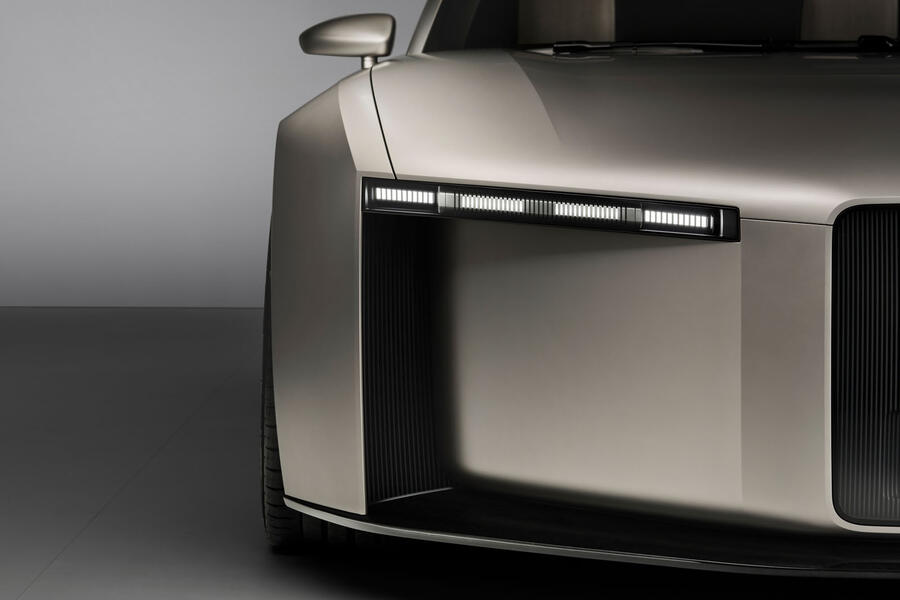
Frascella was most recently employed as a designer of some of the largest SUVs on European roads - the Range Rover and Discovery, for example, being a far cry from this compact two-seater, but he said there is no particular challenge in applying his thinking to radically different segments.
"I've worked on cars of any size and shape over 30 years, so there's very little to no adjustment. What is more important than the size is that you understand what you're doing and what you're trying to bring out."
He added that the minimalist, almost bare-bones approach taken with the Concept C can be applied to various extents across segments, rather than being reserved for smaller, more driver-focused models.
He said: "If you can do it with Range Rover... Once you have a very clear understanding of what you want to do as a design iconography, you can apply it to different products and a different experience.
"So an A8 wouldn't be just a stretched version of this, just with a longer wheelbase and roof, but it will take the principle of this design and it will be applied to the car [in a way] that is appropriate."
Reinvention inside and out
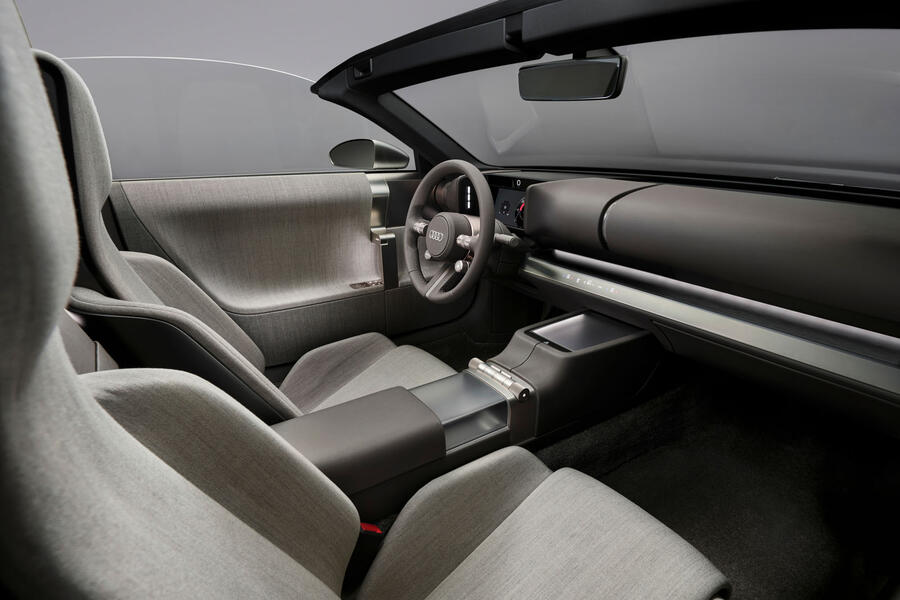
The Concept C's resemblance to Audi's seminal sports coupé is no coincidence, the launch of the original Bauhaus-style TT having been a formative moment for Frascella.
"In 1998, when the first Audi TT arrived at a dealership in Turin, I took a day off work to just look at the car in peace," he said. "I was there for hours, looking at the car from every angle, touching every surface.
"The staff probably thought I was crazy. But for me, the TT was more than just a car. It was a message: you don't need to shout to be heard. You don't need excess to make a statement. You just need clarity. And, more importantly, the courage to follow it."
Clarity and simplicity, then, are themes that will define Audi's future production cars - making good on Frascella's initial pledge to usher in a "timeless and sophisticated design language".
This thinking will also apply to the interiors of the new cars, as showcased by the Concept C's minimalist, driver-focused cockpit.
Audi has fabricated the physical controls from anodised aluminium to give "a tactile experience that reflects mechanical quality", and has engineered them to ensure they make "the unmistakable 'Audi click'" when operated.
A foldable 10.4in screen in the centre console ensures that technology "is always close by yet never dominant", providing "information in an intuitive way and in context, tailored to every situation".
Overall, Audi said, the balance between traditional physical controls and 'shy' digital technology means "the controls are exactly where they are expected to be".
Meanwhile, the multifunction steering wheel is round rather than squared-off as it is in Audi's current models, and the Audi badge in the middle is made from real metal, emphasising the company's renewed focus on authenticity and physical appeal.
Audi: what's coming next?
The first beneficiary of Frascella's new-school approach is expected to be the next-generation Q7, which is understood to have been designed prior to his arrival for a launch in early 2026 but was pulled back into the studio for a late redesign according to the new principles. The production version of the Concept C, though, will be the first car styled entirely according to the new design language.

Frascella will also oversee the final design of crucial upcoming models, including the 'A2 E-tron', an entry-level EV that will replace the A1 and Q2 next year; the electric A4, due later this decade'; and a luxury EV flagship in the mould of the A8, originally known as 'Project Landjet'. A range-topping SUV, set to be called the Q9, is also on the cards as a full-blown rival to the Range Rover that Frascella designed in his previous role.
Audi said that "performance models from Audi Sport" are among its planned unveilings next year – likely to be tied into its entry into Formula 1 next season – likely referring to the next-generation RS5 and RS6, both set to be launched in the coming months.
Separately, Audi is understood to be working on a third-generation R8 supercar, which will use a 900bhp-plus V8-engined plug-in hybrid system shared with the Lamborghini Temerario - much as the previous R8s were related to the Gallardo and Hurácan.
Shaquille O’Neal’s One-of-a-Kind Corvette Stretches the Limits of Custom Car Design

How Science Transformed Car Insurance From Guesswork to Precision in the UK
 Thatcham Research started ‘tearing down’ cars for insurers in 1970
Thatcham Research started ‘tearing down’ cars for insurers in 1970
The UK’s car insurance industry recently began using a new assessment system that is intended to give insurers a far more detailed view of risk, scoring each car from 1 to 99 in the areas of performance, damageability, repairability, safety and security.
This replaced a grouping system unchanged since 2009 but said to have first emerged half a century ago – although that part is true only in a formal sense.
Take this letter to Autocar by ‘Disgusted of Bearsden’, written in 1938, eight years after car insurance became mandatory: “I have been insured since 1918 and never had a single penny from any insurance company, yet because I purchase a Speed 20 Alvis, my company tell me they can no longer cover the risk to my passengers.
There is nothing to prevent me buying a large American car, even faster than the Alvis, yet it is not penalised because it is not a ‘sports’ car.”
The editor replied: “The cost of repairs tends to be higher in cars that are not mass-produced. This involves increased premiums for an equal accident risk.”
An underwriter seethed in reply: “Your correspondent seems a typical ‘sports car’ owner, entirely concerned with himself. Records of insurance companies will show him that ‘sports cars’ have proved a very bad risk and do not pay at ordinary rates. ‘Sports cars’ are purchased by people who try to get their sport on our roads. Let the sporty boys keep to the track.”
Forward 20 years and this from a columnist shows little had changed: “If a high-performance, two-seater sports car is made available at a price which many young men could afford, the car is likely to get such a bad name and therefore bad record in insurance circles, that it in turn becomes virtually uninsurable.
Enjoy full access to the complete Autocar archive at the magazineshop.com
"What matters to insurance people, who must be entirely impersonal, are the model’s accident record and the owner’s age.”
The formalisation of vehicle risk assessment began in 1966, as the Accident Offices Association (AOA), representing 90 insurance companies with three million clients, devised a ‘new deal’.
Autocar believed “the process by which insurers have in the past ‘blacked’ a car even before it had a record, and regardless of driver, was (and still is) a bad and unfair one” and hoped “a gradual change for the better is on the way”.
But while the AOA “recognised that there should be greater incentive and reward for good, accident-free driving” and would be able to offer this thanks to advancements in computing, it also penalised cars “of higher than average performance” when sorting them into seven groups.
Furthermore, foreign cars were usually pricier than British ones to insure, despite “tremendous improvement in importers’ organisations and their dealer networks” in many cases.
This was a difficult time for the UK’s insurance industry: as car ownership soared, up to 100 new companies piled into the market, pulling down premiums and profits – and many of them quickly failed.
The trouble came to a head in 1971, when a stock market fall dealt a fatal blow to Vehicle & General, the UK’s second-biggest insurer, leaving 500,000 people unable to drive. They joined the 1.5 million or so who had suffered likewise in the ’60s – none of whom were guaranteed any money back.
The government responded by passing the Insurance Companies Act 1974, giving it greater powers of oversight, and the Policyholders Protection Act 1975, guaranteeing 90% of a person’s promised benefits.
This was actually a light-touch option: Autocar had suspected that the new Labour government might even nationalise car insurance.
Meanwhile, the UK importers for Japan’s Datsun said: “For some time now, we have been convinced that insurance rates for Datsun cars are unrealistically high. [In response] we have concluded an agreement with an underwriting syndicate at Lloyd’s.
"Largely because [this] has, after close examination of the cars and their service and spares back-up, reclassified them into lower groupings than those given by the Motor Conference, appreciable premium savings are possible.”
By 1978, we found that “the whole market now appears to be united in following the recommendations of the AOA for grouping purposes, although there is no compulsion”.
Much of the credit for the new groupings was owed to Thatcham Research, an organisation set up by the UK insurance industry in 1970. It crash-tested cars to understand repair possibilities, methods and timescales and suggest changes to cut costs – and still does to this day.
F-150 Owners Sue Over V8 Engine Oil Consumption and Hidden Defects

Ultimate Off-Road Adventure: Take Your Crew Anywhere

Porsche Ends Iconic 718 Cayman and Boxster as Electric Era Begins in 2026
Porsche has axed the 718 Cayman and 718 Boxster sports cars – and there are no plans to create another ICE generation.
The German brand has stopped taking new car orders for the coupé and convertible ahead of planned end to production next year. Cars can still be ordered from stock and existing orders will be fulfilled.
The models have been an integral part of the Porsche line-up since 1996 and 2005 respectively, and the fourth-generation models have been in production since 2016.
They will be sold exclusively as electric cars when they return in 2026.
Recent speculation that suggested the decision to cease production of the ICE 718s could be reversed has been denied to Autocar by high-ranking Porsche sources.
The speculation followed Porsche’s new stance that it would adopt a more flexible product portfolio to extend the life of pure-combustion and hybrid models until well into the 2030s.
This has led to the creation of the incoming ICE Macan replacement and update for the Cayenne – cars that will sit alongside electric namesakes.
This, however, will not happen for the 718s. Instead, the badge will exclusively adorn EVs based on the Volkswagen Group’s new EV-specific PPE platform.
While technically unrelated, testing mules (pictured below) confirm the new cars will still be positioned similarly to the existing ICE versions in their size, styling and philosophy.
![]()
What's more, Porsche R&D chief Michael Steiner previously told Autocar that they will be set up to feature motorsport-honed braking and handling to ensure they offer a “real sports car feeling”.
The electric pair were originally due to go on sale this year and be built – albeit for a short time – alongside their ICE counterparts at Porsche’s Zuffenhausen factory. However, delays with engineering, software development and battery sourcing meant the launch date was pushed back.
Tesla Model Y Recall in Australia: Window Safety Fix Delivered Over the Air
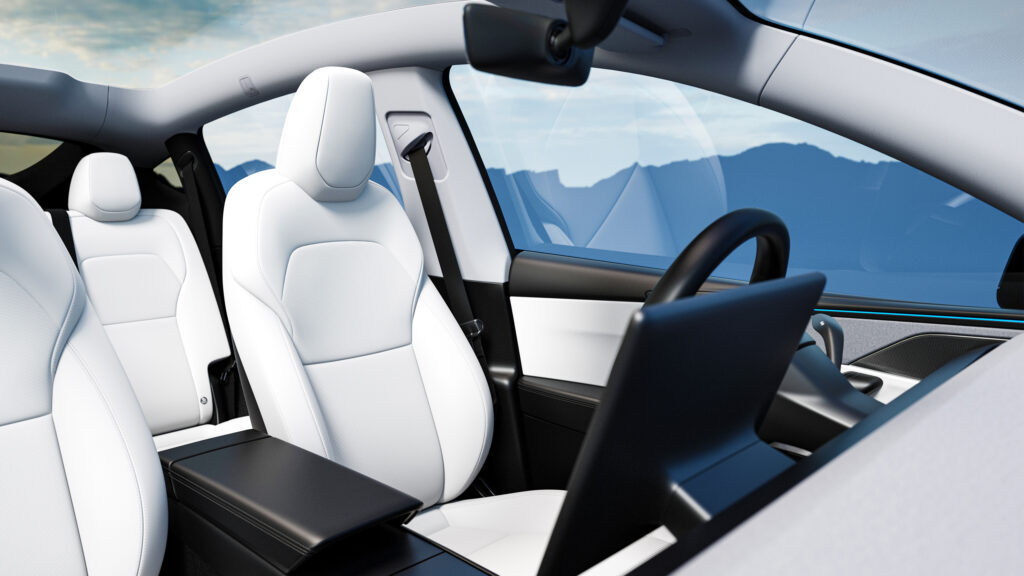
Which Electric Car Would You Choose If Gasoline Vanished Tomorrow




